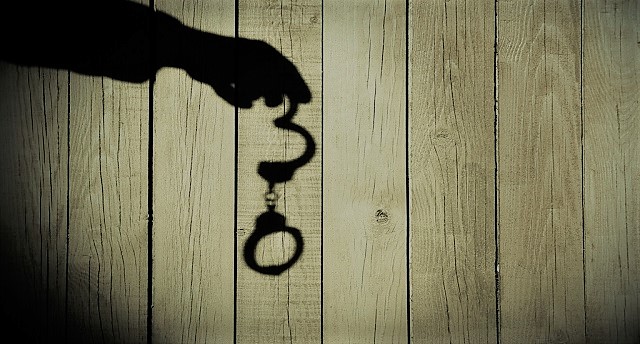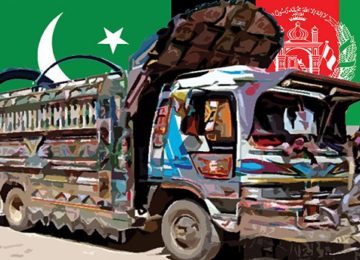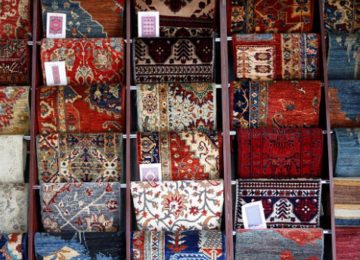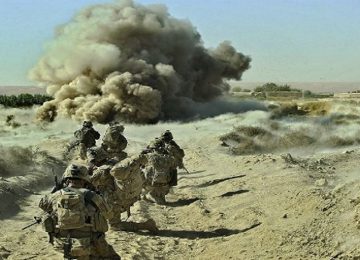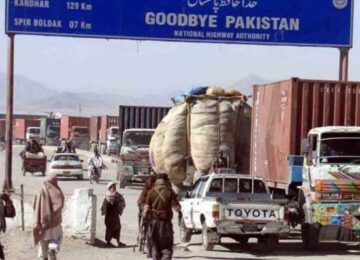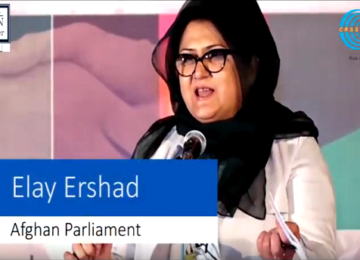October 29, 2018
The Taleban have confirmed to various media that Pakistan has released the most senior member of their movement in detention, Mullah Abdul Ghani, better known as Mullah Baradar (brother). He was arrested in 2010 and held ever since, apparently incommunicado and without charge or trial. Baradar was a founding member of the Taleban and a noted battlefield commander. At the time of his arrest, he was the effective number two in the movement and the de facto operational chief of the insurgency. News of Baradar’s release has been reported before, but this time is looking certain. There is talk that he has been freed in order to help in ‘the peace process’ and, even after eight years in incarceration, AAN Co-Director Kate Clark says, he may have much to offer.
What has changed since Baradar’s arrest?
Depending on how much news Mullah Baradar has had of the outside world in the last eight years, the many changes between 2010 and 2018 may or may not come as a surprise. The Pakistani state, presumably, its intelligence service, the ISI, detained him in February 2010. This was during the US ‘surge’, when President Barack Obama was increasing US troops to over 100,000 in an effort to turn the tide of the war. The surge did result in the US and its allies taking back territory from the Taleban, but those gains have long since been lost. Most of the international troops stationed in Afghanistan have since left, and, apart from an (unknown) portion of the – according to Pentagon figures – around 14,000 United States soldiers (and a few thousands from other nations) deployed in Afghanistan who still have a combat mission, most are involved in the NATO mission to train, assist and advise. (1) As ISAF became Resolute Support and Enduring Freedom Freedom’s Sentinel, the conflict was also transformed. It is now overwhelmingly fought out between Afghans – Taleban on one side and Afghan National Security Forces (ANSF) on the other and civilians suffering from all sides. These days, few Talebab even see foreign soldiers, let alone manage to attack them. In the White House, a (relatively) new president continues to back Kabul, despite tweeting before he came to power that the US should pull out of a country where the people ‘hate us’ (for AAN analysis, see here).
Baradar will find a country where the Taleban have steadily gained ground since 2014 and where they threaten even some provincial centres (see our reporting from June here). They also tax people and ‘run services’ such as education and health – while the government continues to pay the salaries of teachers and medical staff working in areas under their control (possibly half the country – estimates vary as do methods of working out territorial control (see estimates by the BBC, the Special Inspector General of Afghanistan Reconstruction, SIGAR, and AAN’s). The possibility of an end to the conflict was also made more real earlier this year in June when an unprecedented ceasefire over Eid ul-Fitr meant government, Taleban and US forces stopped fighting for three days. Spontaneous and potentially revolutionary fraternisation by all sides took place as Taleban came into the cities and security personnel and government officials visited villages (AAN reporting here and here).
Instead of Hamed Karzai – a co-tribal Popalzai – in power in the Arg, there is technocrat Ashraf Ghani – also Pashtun, but an Ahmadzai. Despite that, the elites in Kabul look remarkably similar. Masum Stanekzai has gone from head of the High Peace Council Secretariat to the National Directorate of Security (NDS) boss, Karim Khalili from former Vice President to head of the High Peace Council, Wais Barmak just nominated to be Minister of Rural Rehabilitation and Development in February 2010 (he gained the post two years later) is now at Interior, Dr Abdullah has become Chief Executive (a new post) and General Abdul Rashid Dostum Vice President.
On his own side, the movement’s founder Mullah Muhammad Omar is gone, as is Mullah Akhtar Muhammad Mansur, his predecessor. Four key Taleban leaders who were in Guantanamo are out and living in Qatar (see AAN analysis here). The Taleban’s Political Commission was also moved to Qatar, in June 2013 – and operates as a place where diplomats and humanitarians can talk to the Taleban. The real power, however, remains with the military men of the movement.
A more unexpected development was the emergence of a rival, laying claim to be fighting the ‘real jihad’, the Islamic State in Khorasan Province (ISKP). It established itself in copy-cat fashion to ISIS in Iraq and Syria; it controls little territory and has little support from Afghans, but it has proved deadly as an urban terrorist outfit, deliberately killing civilians and trying to provoke sectarian conflict by targeting Afghanistan’s Shia Muslims in mass attacks (AAN dossier here). Gulbuddin Hekmatyar’s Hezb-e Islami that fought its own insurgency until 2016 is also back in Kabul (AAN background here and here).
Pakistan still backs the Taleban, but it remains an uneasy relationship. Without the safe havens across the Durand Line, the insurgency would struggle to continue, but the ‘marriage’ is not without its cost, as Baradar himself knows.
One thing that will be familiar is that talk of a ‘peace process’ is again in the air. In 2010, when Baradar was detained, as we reported, the idea of talking to the Taleban was being “much-discussed… pushed to the forefront by President Karzai” with his “‘Policy for National Reconciliation and Reintegration of Armed Opposition Groups’ presented at the London conference” in January 2010 and discussed at a ‘Peace Jirga’ in April (part 1 of an AAN series about it here). The timing of Baradar’s arrest raised questions. Not the least, as Baradar had been residing in Pakistan for most of the previous nine years. At the time, we wrote that “what has become the most common explanation was that the Pakistani ISI was unhappy with contacts he had had with the Karzai government, reportedly with Karzai’s late half-brother, Ahmad Wali Karzai, who before his death was the most powerful man in the Afghan south (see here).”
This time, his release is reported to have been made at the request of the new US special envoy, Zalmai Khalilzad (see AFP and Reuters). Khalilzad made his first trip to the region in September.
The question now is whether the release of Baradar could have any positive repercussions.
Who is Baradar?
If this and the next section look familiar, that is because they are largely taken from a dispatch written in September 2013 after the Pakistan Foreign Ministry made an announcement that Baradar was to be freed.
Baradar was one of the most experienced Taleban commanders, at the heart of the movement since its earliest days in Kandahar through the insurgency and up until his detention in 2010. [… H]e is from Dehrawod in Uruzgan (born 1968), but grew up in Kandahar in a madrassa and fought in that province, mainly in the Panjwayi area, against the Soviet army in the 1980s. He and Omar were in the same fighting group and, according to Dutch journalist Bette Dam, were friends from these days.
Alex Strick van Linschoten and Felix Kuehn reported that Baradar was a founding member of the Taleban movement from 1994. (2)As the Taleban expanded through the country during the mid-1990s, Baradar took on a succession of posts, almost all military: he was head of the south-western military zone, (possibly briefly) governor of Herat (1998), head of the Central Army Corps in Kabul and Deputy Chief of Staff in 1999. He also used to occasionally deputise for Mullah Obaidullah as minister for defence. He was certainly actively involved in the war at the various fronts during those years. The Afghanistan Justice Project (AJP) reports him as having been in Kunduz, the Taleban’s early northern stronghold, in 1997 when Taleban forces attacked, captured and then lost Mazar-e Sharif and as leading a major force into Balkhab, Sar-e Pul – one of the remaining Northern Alliance enclaves – in 1999. The same report provides testimony that, as deputy chief of staff, on the ground during the Taleban offensive on the Shomali in 1999, “he personally order[ed] and over-[saw] one of the massacres, the summary execution of the eleven air base personnel at Dasht-e Chirchirik on August 3.” (3)
After the US intervention of 2001, Baradar was involved in the most significant attempt at Taleban surrender. As Michael Semple and Anand Gopal have reported, Baradar – along with Taleban defence minister, Mullah Obaidullah, aide to Mullah Omar and now head of the Qatar political office, Tayyeb Agha, Minister of Interior, Abdul Razaq, and other senior Taleban – appointed Obaidullah to deliver a letter, purportedly with Mullah Omar’s permission, to Hamed Karzai. Karzai had just been selected as Afghanistan’s new interim leader at the Bonn Conference and was travelling from Uruzgan to Kandahar. The letter, according to Gopal, acknowledged that the Islamic Emirate had no chance of surviving and stated their willingness to accept Karzai’s leadership. The Taleban’s main request was “to be given immunity from arrest in exchange for agreeing to abstain from political life.” Like other attempts at reconciliation, this one fell on stony ground, although whether it was because of Karzai or Rumsfeld has never been clear (see reporting here). Baradar went on to become one of the key commanders of the insurgency.
In the early years after the Taleban lost power, when Mullah Omar was in hiding and largely incommunicado, Mullah Obaidullah was number two in the hierarchy and Baradar number three. After Obaidullah was arrested in Pakistan in early 2007, Baradar took over his role, as the effective operational boss of the movement and head of the Leadership Shura (the Quetta Shura). (Obaidullah died in Pakistani custody in 2010, something that was confirmed by the Taleban in 2012.)
Baradar is a highly experienced military commander and keen political strategist and played a major role in organising the insurgency in its formative years. Newsweek, in 2009, described him as able, cunning and responsible for the spike in Coalition casualties that year. Yet, as Gopal reported, his thinking went beyond the military. He was, said Gopal, behind the original drawing up of a Taleban code of conduct, the Layha, (see AAN reporting here):
He understood that [this conflict] is about hearts and minds. He’s been a major push behind a lot of the insurgency’s efforts to clean up its act. He helped institute the complaints commissions, for instance and was also instrumental in streamlining and making more efficient the military structure.
Will Baradar be important to a peace process?
News of Baradar’s release came first from Pakistani sources, initially it seems in The News (22 October) and later in other outlets, including AP and later Taleban sources confirming the release, for example on the BBC on 24 October, and later other outlets including Tolo. The sources informing about his release have been unnamed. However, speaking to International Crisis Group’s (and former-AAN colleague) Borhan Osman, the release does look to be definite. Osman told AAN he has spoken to senior Taleban and family members of Baradar who told him Baradar was freed in Islamabad late on Wednesday morning and had joined his family in Karachi on Wednesday night “apparently unaccompanied and unmonitored by Pakistani government agents.”
The last time Baradar’s was supposed to be about to be released, in September 2013, Pakistan’s Ministry of Foreign Affairs’ made a very terse and, it turned out, premature announcement. At that time, AAN looked at what implications his release might have for a peace process. Our analysis then – three years after his detention – still stands eight years after:
“It is as yet unclear why Pakistan has decided to release Baradar now,” we wrote, “and whether he will be useful or even available for possible negotiations.” We continued:
After… years in the possibly not so gentle hands of the ISI, it is unclear who he will listen to or who he will represent and, indeed, what his position might still be within the movement. On the face of it, Pakistan has given the Afghan government what it has long asked for, but their release of Baradar could just as well be an attempt to regain control and reinsert Pakistan into the heart of any negotiations. Islamabad might see Baradar as a trump card who could be used to subvert any ‘peace process’, rather than kick start it. The unknowns about Baradar are so many – even as to whether his release is about reconciliation at all – that predictions of what might happen next are not yet possible.
Where Baradar ends up is important. It is difficult to see him enjoying any sort of independent position, needed if he was to take part in negotiations, if he was in Pakistan or Afghanistan. Actually keeping tabs on where he is may be impossible for the outside world – but not, presumably, for the ISI – as it has been for the last tranche of reportedly released Taleban; they are now said to be “reunited with their families”, although to all intents and purposes, they have disappeared.
Baradar certainly has the potential to still be highly influential. Much will depend on his health and vigour and whether he was tortured in custody or otherwise mistreated. In late 2013, at a reported meeting with a High Peace Council delegation, he was reported to have been ‘sedated’, and unable to speak. If Baradar was able and willing to play a role, there is still the question of a role in what. As yet, nothing solid in the way of US-Taleban or Kabul-Taleban talks has emerged.
(1) The NATO mission has a deployment of 16,000. However, it is not clear when it comes to the US soldiers, how many are part of the non-combat NATO Resolute Support mission (with officially 8,745 US soldiers) and how many are in the ‘can-be-combat’ US military Freedom’s Sentinel mission. The ‘hats’ of service personnel can change, even within a day, for example, pilots flying different mission.
(2) In their book, “An Enemy We Created: TheMyth of the Taliban-Al Qaeda Merger in Afghanistan, 1970–2010”, Hurst, London, 2011.
(3) The Afghanistan Justice Project reported:
On August 3, 1999, a group of Taliban, acting under direct instructions from a senior commander [elsewhere named as Baradar], summarily executed a group of eleven captured personnel of the Bagram Airbase, at Bareek Ab in the Dasht Chirchirik plain. Victims had their hands tied and were under armed guard at the time of their execution. On the same day, also in the Bagram sector, Taliban troops also summarily executed two local barbers close to the airbase, and nine other prisoners, in the Dasht Chirchirik.
By Special Arrangement with AAN. Original link.
Disclaimer: Views expressed on this blog are not necessarily endorsed or supported by the Center for Research and Security Studies, Islamabad.



